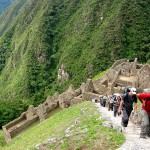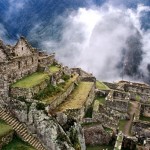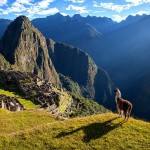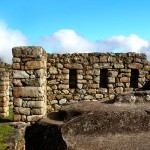The enigmatic complex of Machu Picchu, the most important and beautiful legacy of the ancient Peruvian, is part of the Historic Sanctuary of the same name, which is also one of the few places in the Americas placed on both the World Cultural and Natural Heritage Lists by UNESCO. It is located high on top of a mountain and complements the exuberant nature that surrounds it, creating a one of a kind place in the world.
Machu Picchu stands 2,430 m above sea-level (7,972 feet), in the middle of a tropical mountain forest, in an extraordinarily beautiful setting. It was probably the most amazing urban creation of the Inca Empire at its height; its giant walls, terraces and ramps seem as if they have been cut naturally in the continuous rock escarpments. The natural setting, on the eastern slopes of the Andes, encompasses the upper Amazon basin with its rich diversity of flora and fauna. Macchu Picchu is an outstanding example of man’s interaction with his natural environment.
Set on the vertiginous site of a granite mountain sculpted by erosion and dominating a meander in the Rio Urubamba, Machu Picchu is a world renowned archaeological site. The construction of this amazing city, set out according to a very rigorous plan, comprises one of the most spectacular creations of the Inca Empire. It appears to date from the period of the two great Incas, Pachacutec Inca Yupanqui (1438-71) and Tupac Inca Yupanqui (1472-93). The function of this city situated at least 100 km from the capital, Cuzco, has not been formulated which are not verifiable given the absence of written documentation and sufficiently explicit material evidence.
Machu Picchu bears, with Cusco and the other archaeological sites of the valley of the Urubamba a unique testimony to the Inca civilization.





